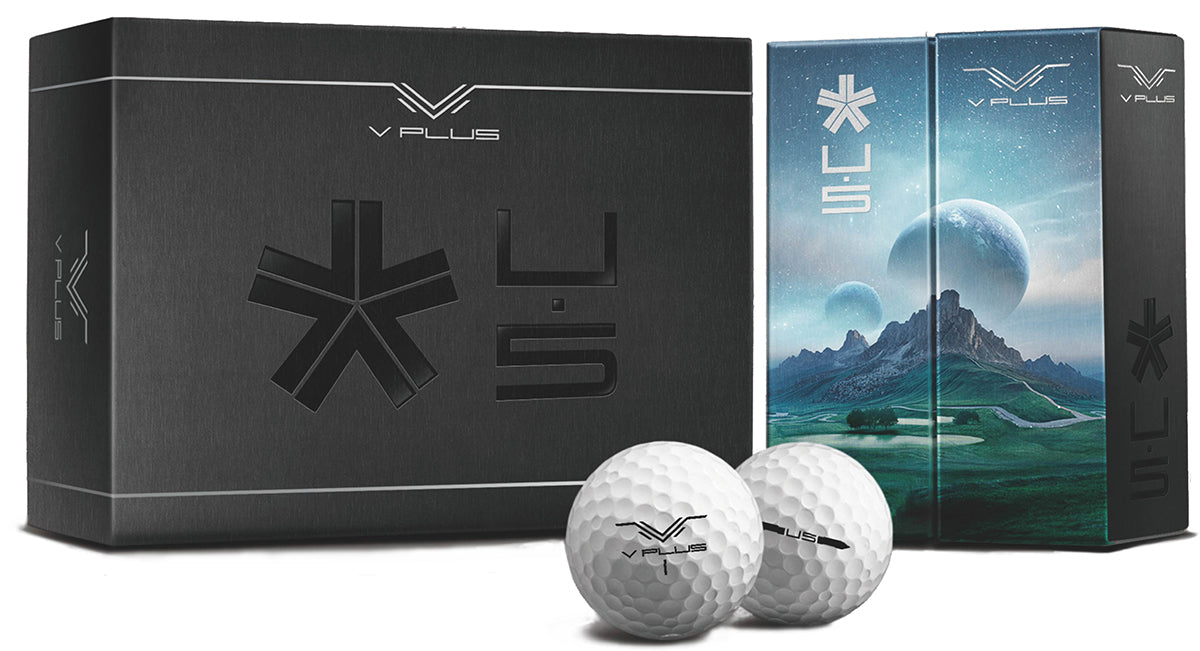Tour Golf Balls - What you need to know

Tour Golf Balls - What you need to know
I recently visited one of Australia’s leading golf retailers when I asked the manager what his most affordable Urethane-covered Tour Ball is. I was alarmed when he said that it was the Callaway CXR. The reason for my dismay was that they sell the CXR as cheap as $29.95 so I decided to dig a little deeper as Golforder cannot get close to selling our U-Series Tour Balls near this price. It turns out that the Callaway CXR is actually a 3-piece Ionomer (otherwise known as Surlyn) covered ball, very similar to our V-Plus Speed Plus Ball. While I'm sure that the CXR is a fine ball, the fact that he didn’t know the difference between a Urethane-covered Tour ball and a Surlyn covered ball made me wonder if most weekend golfers actually care what ball they’re using and if they notice the difference in the performance of one type of golf ball compared to another.
I'm sure that everyone knows that the Titleist Pro V1 is a great ball and the one that 70-80% of Pros use. But do they know why?
The reason why the Pro V1 was a revelation when it was launched to the market in 2001 and remains the #1 ball in golf 21 years later is a combination of several factors:
Construction – The Pro V1 is a solid core, multi-layer golf ball with a Urethane Cover but interestingly, it wasn’t the first ball of this type on a market that had been previously dominated by Balata-covered, wound golf balls like the Titleist Balata, Professional and Maxfli HT.
Mark O’Meara won two majors with a solid-core, urethane-covered Top Flite Strata ball in 1998 and that was the catalyst for a seismic shift in how all Tour balls would be made in the future. In 2000, Tiger Woods switched from the Titleist Professional to Nike's new three-piece, solid-core Tour Accuracy ball, going on to win six of his next eight events, including three majors. Later that year at the Las Vegas Invitational, Titleist unleashed the prototype Pro V1 and within two weeks more than 100 pros were playing solid-core balls. Within two years, production of wound golf balls had ceased.
Distance – What the Pros first noticed when comparing the Pro V1 against the Professional was the massive gains in driver distance. Players were instantly driving the ball 15-20 yards further. But that wasn’t the only benefit….
Spin – The Urethane cover of the Pro V1 was much firmer and more durable than the rubber, Balata that had previously been the cover material of choice in Tour Balls. While it was a tougher material than Balata, it still gripped the ball adequately with the irons and wedges so, in combination with the solid core, and layers in-between, it produced outstanding spin with approach and greenside shots.
Feel – Most professionals had grown up using Balata-covered, wound golf balls and many of them, like the Titleist Balata and Professional, had a liquid core. When you hit one of these balls nowadays, it almost feels like you’re hitting a squash ball…..they’re so soft. So, when the switch to the solid-core, Urethane cover came, they felt like a rock. Like the cheaper, solid core balls such as Top Flite XL, Dunlop DDH and Pinnacle etc. However, the performance benefits of the solid-core ball couldn’t be ignored. Now that is the norm and the solid click at impact with the Driver or putter is all most current players have ever felt.
Consistency – What the solid core, Urethane-covered golf ball offered was outstanding consistency and durability compared to the previous generation of Balata-covered Golf Balls. The solid core delivered a consistent, penetrating ball flight compared to wound balls which could ‘balloon’ into the wind. And the Urethane cover didn’t split, cut, or scuff with a mishit (or even bunker) shot like a Balata covered ball would so while they were very expensive, they would last a lot longer than a Balata ball.
In summary, the Top Flite Strata was the pioneer however the Pro V1 cemented the biggest advance in golf ball technology that we enjoy today with the perfect combination of distance, control, spin and durability.
Here is a list of current solid-core, urethane covered Tour Balls on the market:
Brand |
Model |
Construction |
Cover |
|
Taylormade |
TP5 |
5-Piece solid core |
Urethane |
|
Taylormade |
TP5x |
5-Piece solid core |
Urethane |
|
V Plus |
U5 |
5-Piece solid core |
Urethane |
|
V Plus |
U5x |
5-Piece solid core |
Urethane |
|
Titleist |
Pro V1x |
4-Piece solid core |
Urethane |
|
Titleist |
-Pro V1x |
4-Piece solid core |
Urethane |
|
Wilson |
Staff Model |
4-Piece solid core |
Urethane |
|
Wilson |
Staff Model R |
4-Piece solid core |
Urethane |
|
Srixon |
ZStar XV |
4-Piece solid core |
Urethane |
|
Callaway |
Chromesoftx |
4-Piece solid core |
Urethane |
|
Titleist |
Pro V1 |
3-Piece solid core |
Urethane |
|
Titleist |
AVX |
3-Piece solid core |
Urethane |
|
V Plus |
U3 |
3-Piece solid core |
Urethane |
|
Taylormade |
Tour Response |
3-Piece solid core |
Urethane |
|
Bridgestone |
Tour BX |
3-Piece solid core |
Urethane |
|
Bridgestone |
Tour B XS |
3-Piece solid core |
Urethane |
|
Bridgestone |
Tour B RX |
3-Piece solid core |
Urethane |
|
Bridgestone |
Tour B RXS |
3-Piece solid core |
Urethane |
|
Srixon |
ZStar |
3-Piece solid core |
Urethane |
|
Callaway |
Chromesoft |
3-Piece solid core |
Urethane |
